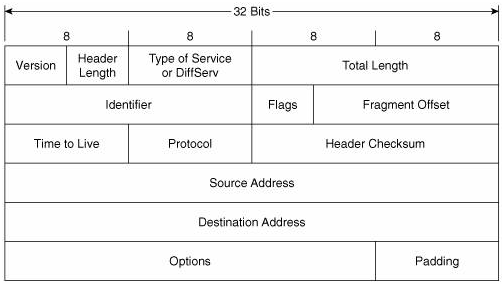In today's interconnected world, where devices ranging from smartphones to smart home appliances are constantly communicating over the internet, the need for a robust and scalable network protocol is more crucial than ever. Enter IPv6, the successor to IPv4, offering a plethora of benefits that make it the preferred choice for ensuring seamless communication and addressing the limitations of its predecessor.
But let's dive into what makes IPv6 so much better than IPv4.
Address Exhaustion and the Need for IPv6:
Imagine the internet is like a giant phone system, where every device needs its own unique phone number to talk to other devices. In the old system, called IPv4, there were only a limited number of phone numbers available. As more and more devices joined the internet, we started running out of phone numbers. The explosive growth of the internet brought about an impending crisis – the exhaustion of IPv4 addresses. With only about 4.3 billion possible IPv4(32-bit addressing = 2^32 IP addresses) addresses available, we were rapidly approaching a point where there weren't enough addresses to meet the demands of an increasingly connected world. Then came into the world of networking IPv6 with 2^128 addresses exhausting which is practically impossible. This means that every device can have its own unique phone number, and we'll never run out.
Elimination of Network Address Translation:
IPv6 eliminates the need for complex Network Address Translation (NAT), which was required in IPv4 to allow multiple devices in a local network to share a single public IP address due to address scarcity. With IPv6's ample supply of unique addresses, every device can have its own globally routable IP address without the need for translation. This eliminates the common NAT-related issues, like devices not being directly reachable from the internet and potential complications in peer-to-peer applications.
The difference in Header Format:
IPv4 Header Format:

IPv6 Header Format:

Unlike IPv4, IPv6 eliminates the header checksum and streamlines optional fields by using extension headers. This simplified IPv6 header structure facilitates faster routing and processing, making the internet more efficient for the increasing demands of today's interconnected world. While IPv4 included a header checksum field to detect errors in the header during transmission, IPv6 relies on error-checking mechanisms implemented at other layers of the networking stack, such as the link layer or higher-level protocols. This distributed error-checking approach ensures the integrity of data during transit while allowing routers to focus on forwarding packets swiftly. The removal of the header checksum from the main IPv6 header further contributes to quicker data transfer and responsiveness, helping to maintain the pace of modern digital communication.
Enhanced Security with IPsec:
IPv6 introduces a pivotal advancement in data security through its embedded support for IPsec (Internet Protocol Security), setting it apart from its predecessor, IPv4. IPsec is a comprehensive suite of protocols that enhances communication security and data integrity across networks. Unlike IPv4, IPv6 natively incorporates IPsec, eliminating the need for separate implementations. IPsec in IPv6 ensures data authenticity through robust authentication and prevents tampering during transmission. Additionally, advanced encryption renders intercepted data unreadable to unauthorized parties, a crucial feature for sensitive information transmission. IPsec in IPv6 counters replay attacks and safeguards against network-level threats like Man-in-the-Middle attacks. Its adaptability and scalability address diverse security needs. Most importantly, IPv6's IPsec integration enables end-to-end security, guaranteeing data protection across intermediaries. In summary, IPv6's IPsec support, distinct from IPv4, elevates data security by seamlessly integrating encryption, authentication, and data integrity mechanisms within the protocol, fostering a secure digital environment for confidential information across networks.
Using NDP to map MAC Address
In IPv6 networks, NDP (Neighbor Discovery Protocol) is an advanced version of ARP (Address Resolution Protocol) used in IPv4. While both help devices find each other's MAC addresses using IP addresses, NDP introduces enhancements. It integrates into IPv6's core design, enabling smoother autoconfiguration and router discovery through Router Advertisement messages. NDP includes Duplicate Address Detection (DAD) to prevent conflicts, uses efficient multicast messages for tasks, and has a streamlined header structure. These improvements make NDP more efficient and versatile than ARP, contributing to the reliability and simplicity of IPv6 networks.
Conclusion: Embrace the Future with IPv6
As the digital landscape evolves, embracing IPv6 becomes not just a choice, but a necessity. Its vast address space, improved efficiency, enhanced security, and seamless mobility make it the clear winner over its predecessor, IPv4. By adopting IPv6, we ensure that our devices, networks, and the entire internet ecosystem are prepared for the challenges and opportunities of tomorrow.


